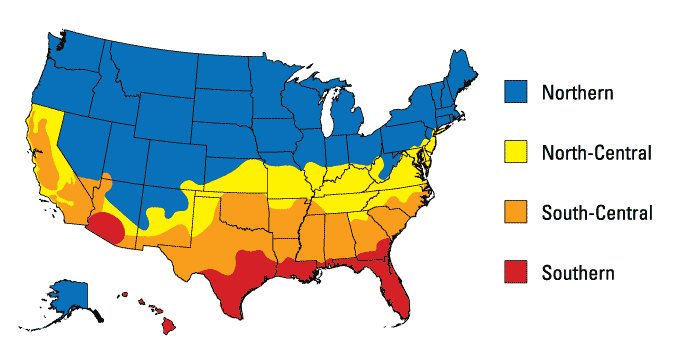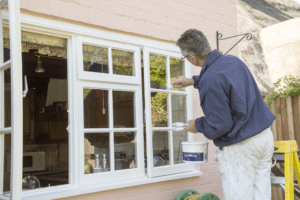1. Know the Materials Available
There are a number of proprietary door systems available, but in general entry doors fall into three types:
Wood. This is a traditional front door material. Wood doors are handsome and available in a variety of species, each with a distinctive look. It’s a classic material that other types of entry doors try to mimic. In addition to their standard product line, many manufacturers offer custom-made wood doors. Modern wood doors have improved weather-stripping systems, but in terms of insulating value, they are not as efficient as other materials.
Steel. These are an economical alternative to wood doors, and they are available in a number of finishes. From an energy standpoint, steel-clad doors have an insulated core that improves its ability to stop drafts and air leaks. Steel doors are also stronger than other options, so many consider them good choices for home security.
Fiberglass. As with steel doors, these products have insulated cores. They are available in a number of finishes, with some that look remarkably like real wood. Fiberglass doors can withstand just about any climatic conditions.
2. Look for the Energy Star Rating
One way to ensure that you buy the most energy-efficient door available is to look for the Energy Star logo on the product. Energy Star is a joint project of the Department of Energy and the Environmental Protection Agency that sets energy standards for a variety of items, including windows, skylights and doors. Products that carry the Energy Star logo are more energy efficient than standard products.
When it comes to rating doors, the Energy Star program considers the insulating value of the door material as well as the energy performance of any glass on the door, including sidelites, if they are part of the door system. Energy-efficient doors that contain glass will usually have multiple panes, often with a coating that contributes to its ability to stop heat loss or prevent unwanted heat gain.
The map and table show Energy Star’s latest requirements for doors. The country is divided into four areas based on heating and cooling requirements. The required U-factors depend on the amount of glazing on the door. U-factors measure the rate of heat transfer. The lower the U-factor, the better the material is at blocking heat transfer. You can convert U-factors to R-values, a more common measure of thermal resistance, by dividing the U-factor into one (R-value = 1/U-value). For example, a U-factor of 0.25 corresponds to an R-value of four.
The Solar Heat Gain Coefficient (SHGC) is a number between 0.0 and 1.0 that measures the ability of the glass to block heat from sunlight. The requirements are more stringent for warmer parts of the country.


3. Consider Your Installation Options
High-quality doors will feature good weather stripping systems. Some have adjustable thresholds that keep drafts out and are designed to channel water away from the door. Most doors are sold “pre-hung,” which means they come already built into a frame. This makes installation easier, but not necessarily foolproof. The installer will need to settle the frame in the opening and make sure it is level and plumb. The space between the door frame and the house framing should be insulated before installing the molding.
Knowing the options available will help you choose a door that fits your taste and conserves power. By properly installing an insulated front door, you won’t overexert your heating and cooling systems and your home will use less energy.
From Care2.







